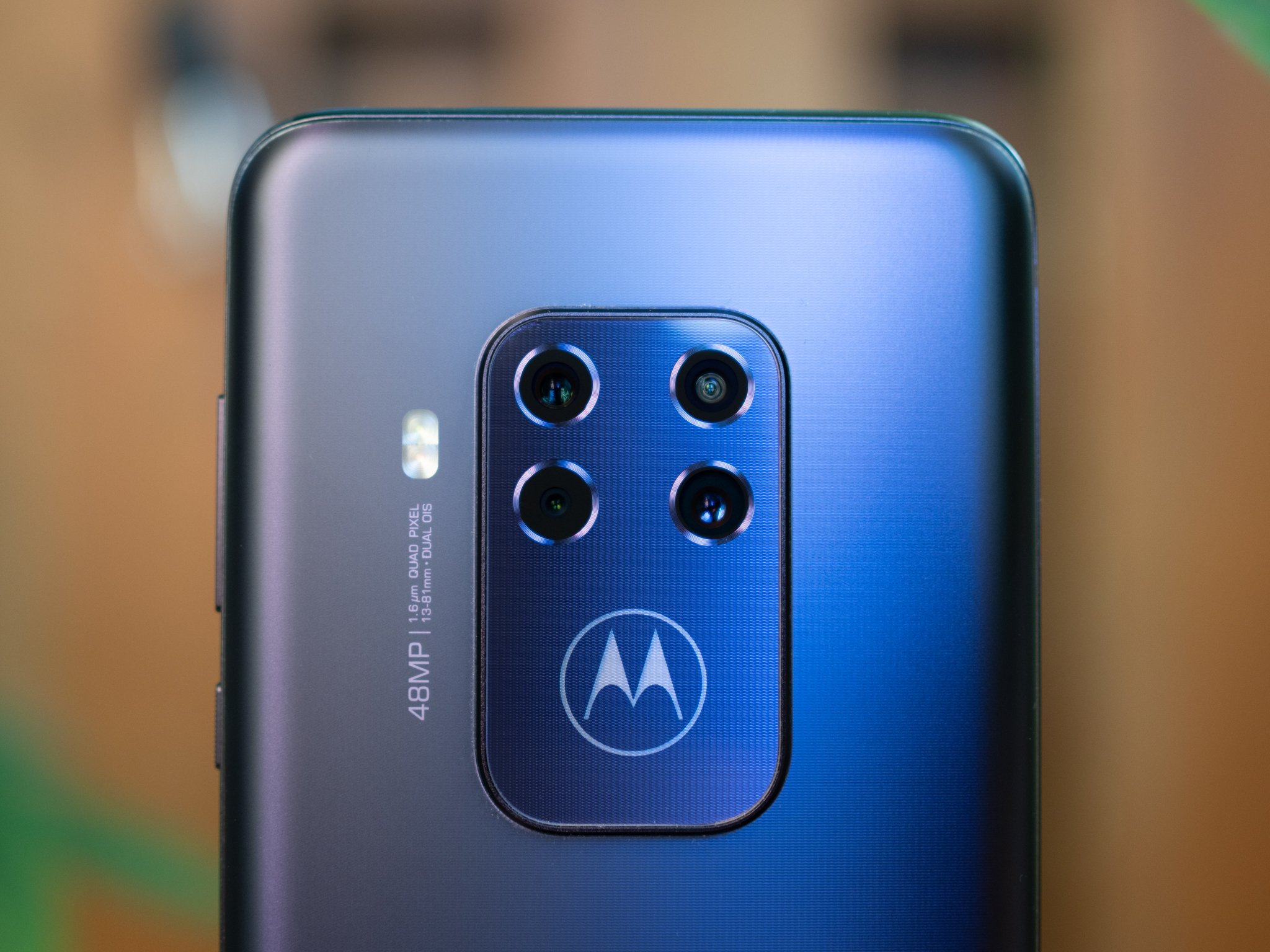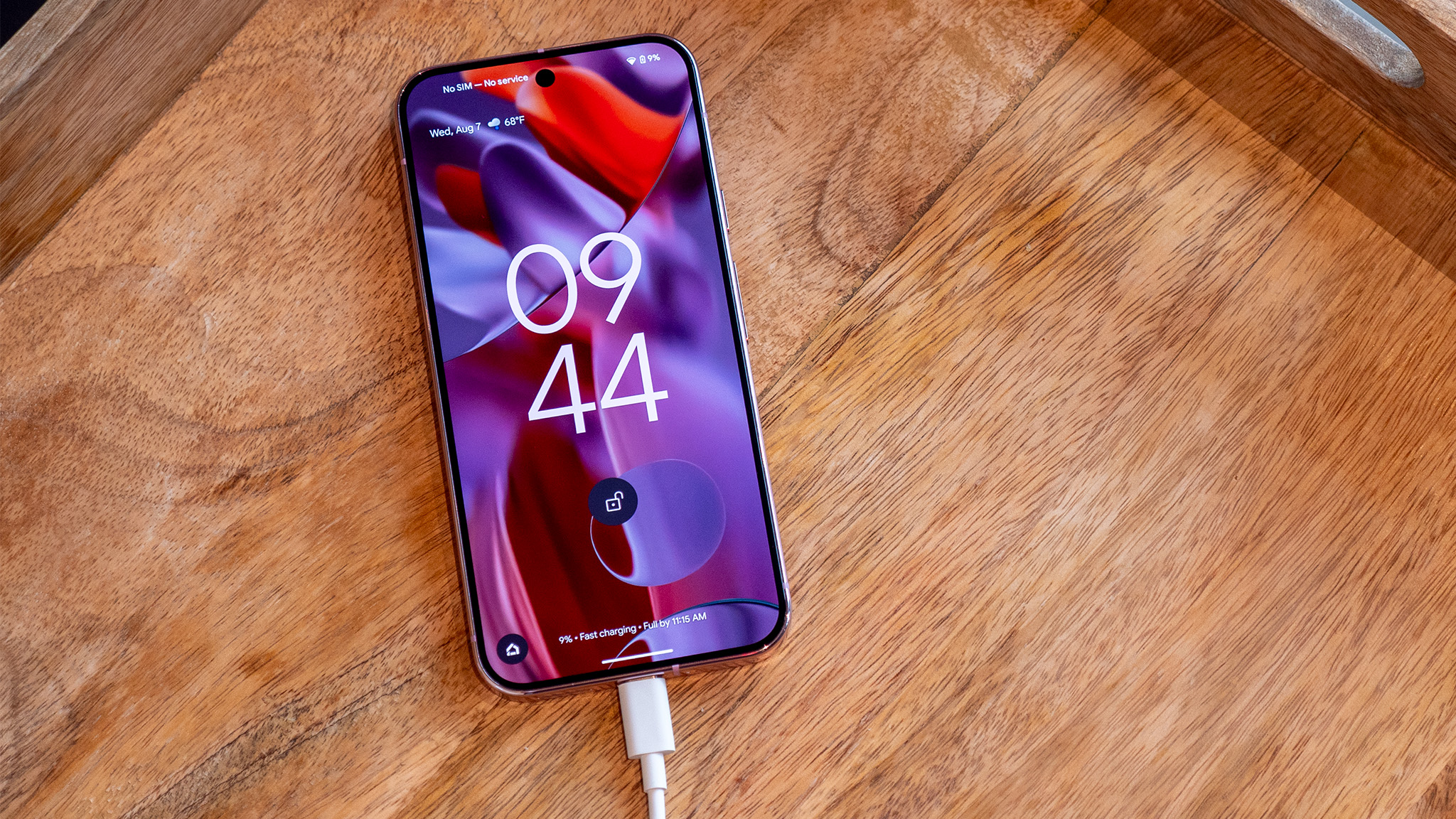Android Central Verdict
Bottom line: The Motorola One Zoom is a nice surprise from Motorola, with excellent hardware and a lovely, warm design. Plus, Motorola's software is still great. But its main draw, the quad-camera setup, despite producing great photos, is let down by poor performance from a mid-range chip with so-so image processing.
Pros
- +
Excellent camera performance
- +
Warm, inviting design
- +
Cosmic Purple color is stunning
- +
Excellent battery life
- +
Motorola's software is still top-notch
Cons
- -
Ships with Android 9 Pie
- -
Doesn't run Android One like other One phones
- -
Display is too cool
- -
Doesn't support Verizon or Sprint
Why you can trust Android Central
The Motorola One Zoom is a strange phone debuting at an odd time from a company doing peculiar things. Word has it that it was never meant to arrive in North America — Motorola has a very particular release cadence, buoyed by the G series in the low-end and the Z series at the mid to high-end — but a particular warm response in Europe prompted the company to reconsider.
I'm glad the company did, too, because as flawed as this phone is, it's a ton of fun to use, and easily my favorite Motorola phone in years.
At $449 (on sale right now for $399), it's also pretty competitively priced given the robust spec sheet, but is it worth your time over something like the Pixel 3a XL?
Motorola One Zoom Review
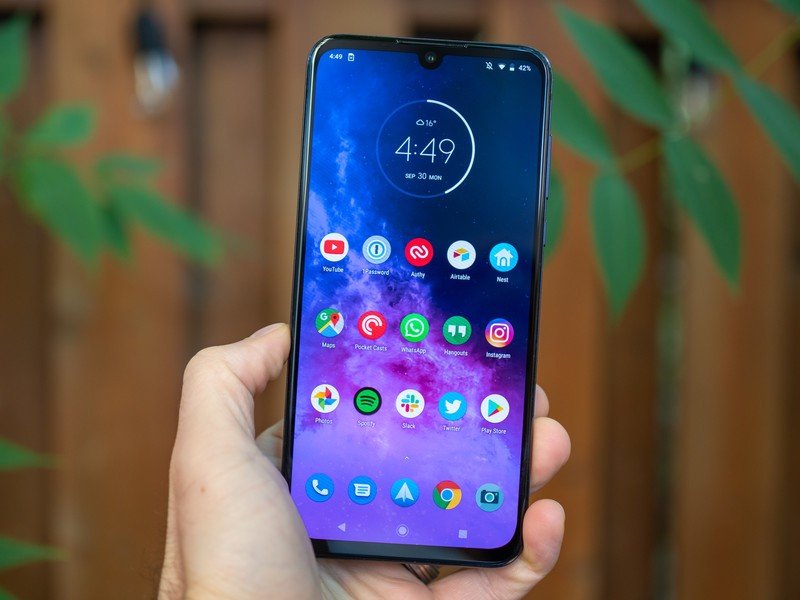
| Spec | Motorola One Zoom specs |
|---|---|
| Operating system | Android 9 Pie |
| Processor | Qualcomm Snapdragon 675 processorOcta-core Kryo 460 @ 2.8GHz GHz11nm process |
| Screen | 6.4-inch Full HD (2340x1080) AMOLED19:9 aspect ratio |
| RAM | 4GB |
| Storage | 128GB |
| Rear camera | 48MP Quad Pixel (12MP output), 1.6umf/1.7 lens, OIS |
| Rear camera 2 | 8MP telephoto3x zoom, OIS |
| Rear camera 3 | 16MP ultrawide117-degree FoV |
| Rear camera 4 | 5MP depth |
| Front camera | 25MP0.9umf/2.0 wide-angle lens |
| Battery | 4000mAh |
| Colors | Electric Grey, Cosmic Purple, Brushed Bronze |
| Dimensions | 75 x 158 x 8.8mm |
| Weight | 190 grams |
I resist the term 'fanboy' as often as I can, but if there's any vestigial wide-eyed nostalgic love for a brand left in me, it's for Motorola. Google Photos reminded me recently that the original Moto X is just over six years old, and the road the company has taken from there to here is windy and easily criticized.
Now firmly in the grasp of Lenovo, whose minding has been more temperate than innovative, Motorola has walked away from trying to make Mods happen — though the Moto Z series is still alive, mummified in its 2016-era design — and is instead laser-focused on building particular phones for specific regions. The Motorola One Zoom is the third phone in the company's Motorola One lineup and is the first not to run Android One. Yes, it's strange, but the aesthetic differences are minor — the only major liability that comes from such a decision is the likely protraction of software updates.
Still, the Motorola One Zoom launches with Android 9 Pie and accompanies all of Motorola's software touches, including the now-famous always-on Moto Display and the various gestures, like wrist-twist-for-camera, that have been associated with the company since 2013. In fact, Motorola hasn't changed much about its software experience for nearly that long: every year, a small number of improvements are made to the feature set, like being able to take a screenshot by swiping the display with three fingers or annotate screenshots, but these are insignificant. It's all very evolutionary.
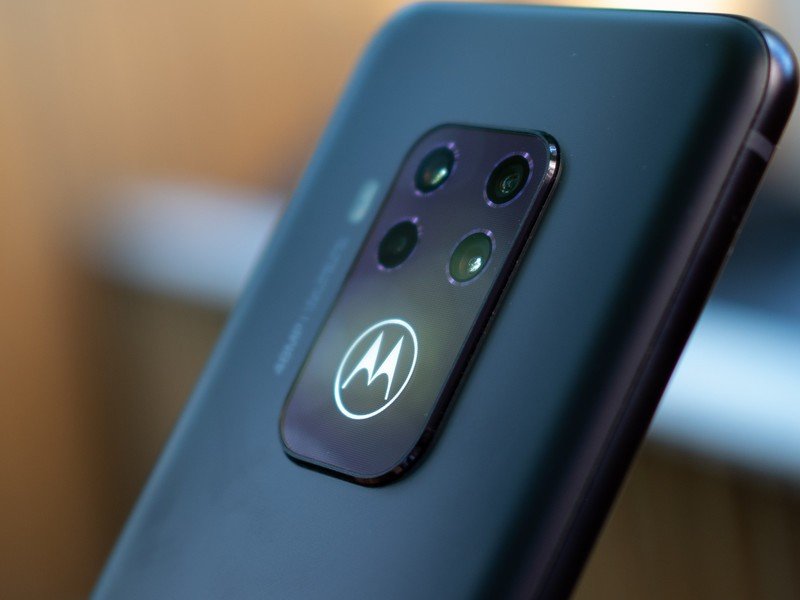
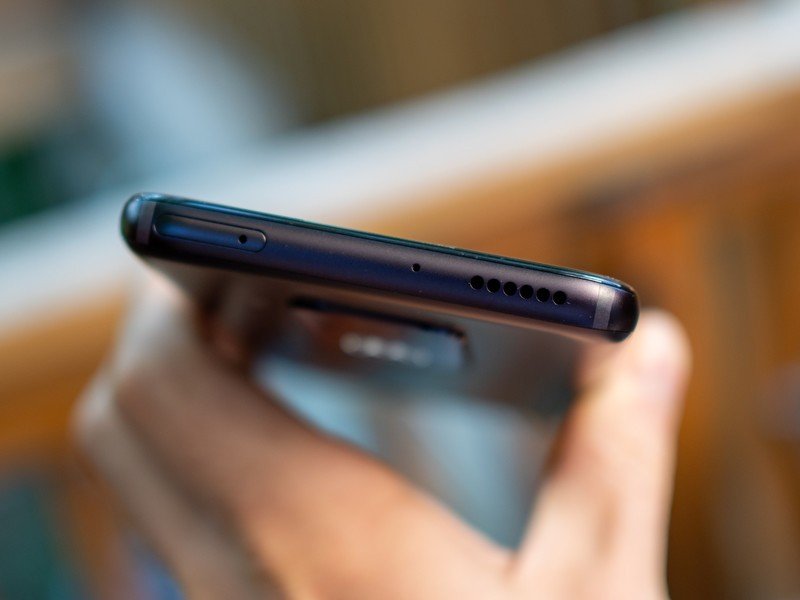
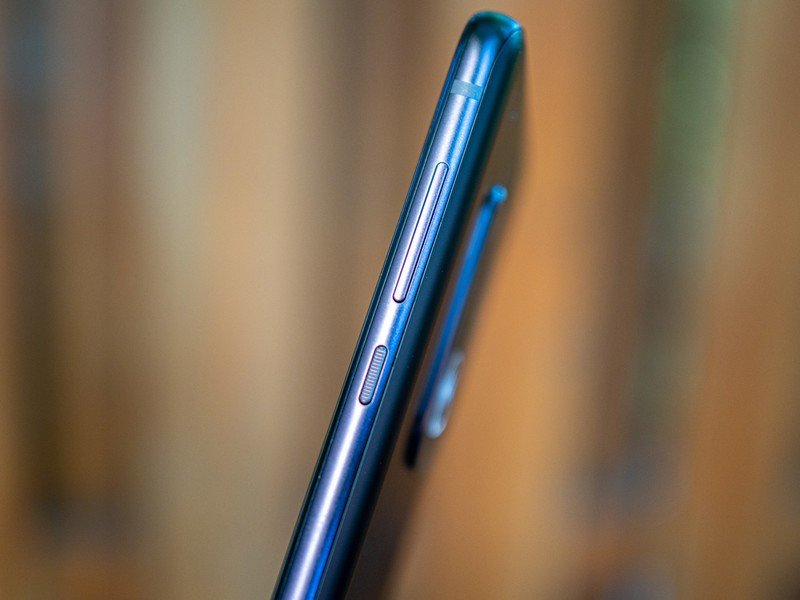
Source: Android Central
Ironically, one previous area of software strength, Motorola's One Nav navigation system, is now a liability: it's different enough from Android 10's official, and much more intuitive, gesture system that I found it difficult to get used to. Not a problem most people will likely have, but if the One Zoom ever does get updated to Android 10, One Nav isn't long for this world.
What's most interesting about the Moto One Zoom is how it tries to fit into the existing mid-range Android space. At $449, there's a lot to like here, including a big 6.4-inch OLED display that's very saturated, but also very blue, like you're staring at one of those old LED bulbs. While it's possible to change the intensity of the colors, there's no way to do the same for white balance, which is a shame.
This is a high end-feeling phone with the guts, and price tag, of a mid-range Android device.
The front is also covered in something other than Gorilla Glass — a cheaper competitor called Panda King glass, which scratches more easily — while the rear is covered in Gorilla Glass 3. Interesting choice, but also not unexpected given the price point Motorola is trying to hit.
That display has a small teardrop notch centered at the top, with more prominent borders around the 25MP front-facing camera than on similar-designed phones from OnePlus and Honor. Still, the One Zoom is more modern-looking than most recent devices from the company, and definitely one of its most attractive.
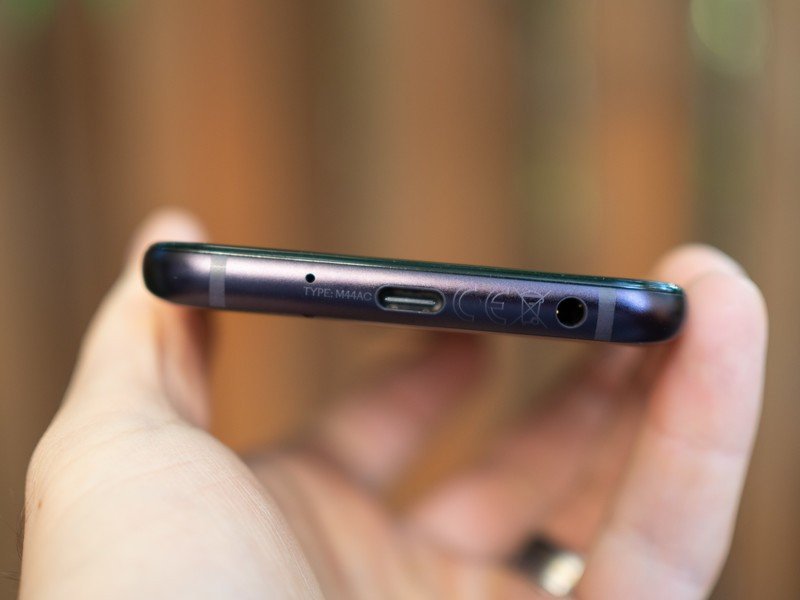
While there are USB-C port and headphone jack on the bottom of the phone, the only speaker is up top, blaring music and other audio straight up — an atypical placement, but not one entirely unwelcome. First, the good: the speaker is full-spectrum, offering more bass than would seem likely from such a small source, and doesn't get tinny. The bad, though: the speaker's top volume is disappointing, and in anything louder than the drone of an air conditioner or passing traffic you may not be able to hear it clearly.
Moving around back, the phone's four-eyed spider camera setup is a symmetrical feat, disrupted only by the flash to the left of the module. A Motorola logo below the cameras lights up when a notification comes in, making functional the choice of putting your phone flat down on a table. Even nicer is the Cosmic Purple colorway, which looks even better in person than it does in the renders.
Overall, I really like this phone's hardware. At 190 grams, this is a big, hefty phone — though it's under 9mm thick — but thanks to the matte gradient finish, it doesn't feel slippery or tentative when holding it without a case. Thankfully, a clear TPU case comes with the phone, so you can give it some added protection if desired (at the expense of some of its beauty.
Performance and battery life
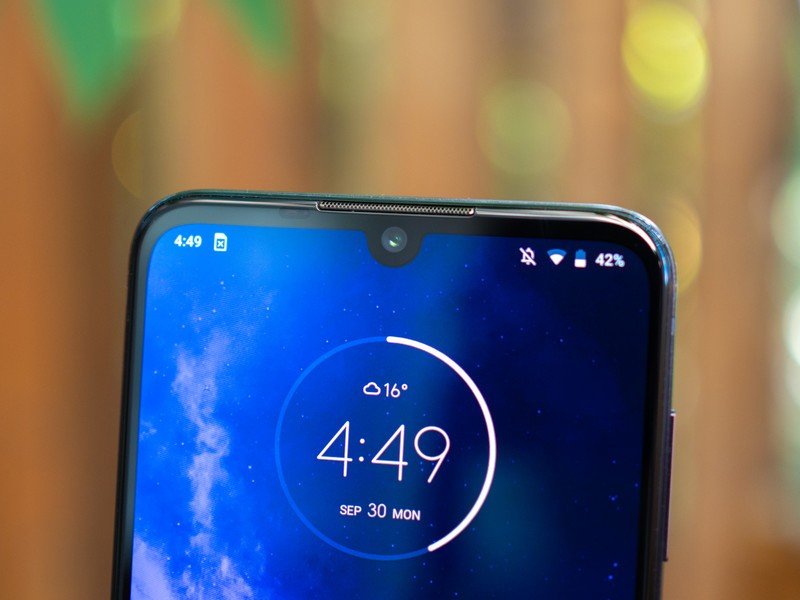
Things start to unravel a bit when digging into the Motorola One Zoom's performance. It uses a Snapdragon 675 chip, similar to the one found in the Pixel 3a. But whereas that phone doesn't skip a beat, and performs nearly as well as its Pixel 3 counterpart, the One Zoom feels like it's playing frame-rate catch-up most of the time. It's potentially not that noticeable if coming from a previous-generation phone, and the device still feels performant, but given my tendency to swap phones every few days, this one feels bogged-down.
Where does that slowdown manifest? Apps take longer to load than on other phones; the camera app stutters, constantly, leading to missed photo opportunities or worse, being forced to close it entirely.
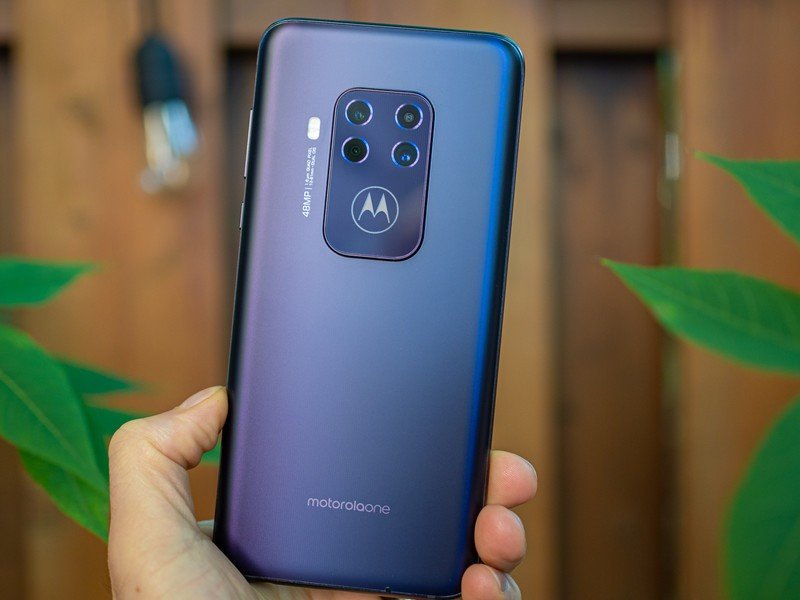
The built-in optical fingerprint sensor is also a first-generation part, and while it does the job, its languidness is painful coming from devices like the OnePlus 7T and Huawei P30 Pro.
It's possible some of the slowdown is due to the phone's modest 4GB of RAM inside, which we've seen cause trouble on other phones this year, but I'm grateful for the abundance of internal storage; all variants get at least 128GB, with optional expansion through microSD.
Onto battery life, the 4,000mAh cell gave me more than I needed for a heavy usage day. I used the Moto One Zoom as my main phone for over a week, and not once did it drop below 40% by the end of a session. With a 1080p display and a power-sipping Snapdragon 675, you may not get the best performance, but it makes up for it in uptime.
Camera
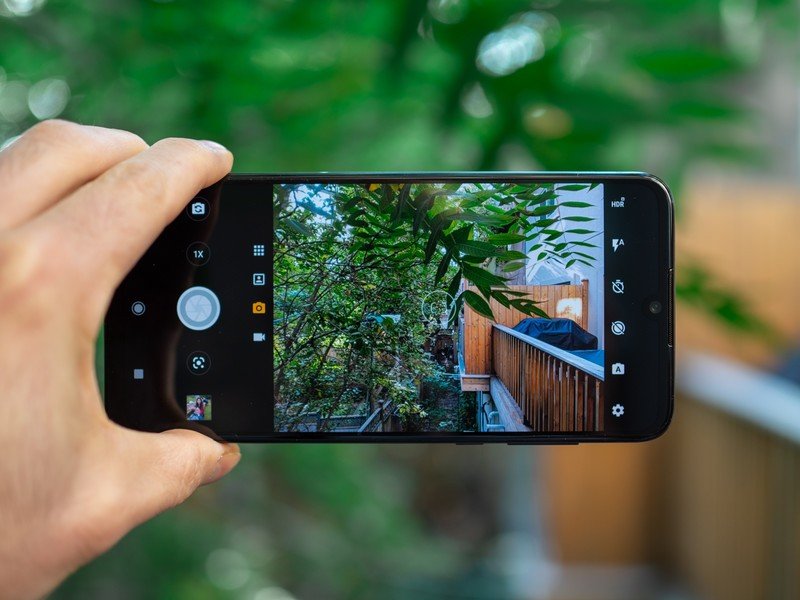
Of course, the star of the show here is the camera system, which embraces the multi-mode nature of all modern smartphones at a much lower price. I mentioned above the inconsistent performance of the camera app, but when it works it's a treat to use.
Getting into the app itself is easy thanks to the twist-to-open gesture brought over from previous Motorola phones, and it has received the most work of any of the company's first-party apps over the last few years. Switching between modes is simple, as is engaging the various zoom levels, all of which are accessible with an index finger when holding the phone in one hand — something Huawei has yet to figure out.
The hardware is a respectable mishmash of high and medium quality sensors and lenses, aided in two of the three cases by optical image stabilization. The primary sensor is Sony's IMX586, the same one found in the OnePlus 7 Pro, Honor 20 series, ASUS ZenFone 6, and many others on the market today. It totals 48 megapixels but combines the information from four pixels into one, resulting in a 12MP photo (unless you choose to use all 48 million pixels, which is nice for increasing detail at the expense of light sensitivity). The lens is optically stabilized, which is great (and pretty uncommon for a Motorola phone), and produces decent shots in most lighting conditions.






Another sensor is 8MP, which powers the 3x telephoto lens to an equivalent focal length of around 72mm. This one's optically stabilized, too, and while the sensor itself is fairly low-quality — there's not a lot of detail in the finished photos, especially in middling light — I love the fact that Motorola chose to go beyond the typical double-distance in favor more dramatic 3x framing opportunities.
The 16MP sensor is paired with an ultra-wide lens with a 117-degree field of view. Like many ultrawide lenses, this one distorts dramatically, and can't be relied on for accurate colors or white balance, but it's a fun addition to the team and great for landscape photos or other interesting locales.



Ultrawide (left) | Wide-angle (center) | 3x telephoto (right)
Finally, there's a 5MP sensor meant entirely to capture depth information, which helps create an accurate delineation between portrait subjects and their backgrounds. Unfortunately, Motorola still has a long way to go to getting this right, but it's a huge improvement over previous Moto devices — specifically, edge detection is much better than it used to be, and produces some decent, but not great, portrait shots.
The front's 25MP camera outputs 9MP photos in low-light situations, and they're pretty darn good for a phone at this price point. I'm actually really impressed with the selfie experience overall on this phone.
But let's go back to the rear cameras, because they will make or break my recommendation. And I did a bunch of pixel-peeping and came to the conclusion that, while Motorola still doesn't do a great job with white balance or color science — oranges are more yellow, reds are more maroon, greens are far too bright and punchy — if you're willing to play around in a photo-editing app, the photos themselves are full of detail, and convey a life and energy that few Motorola phones have managed ... basically ever.
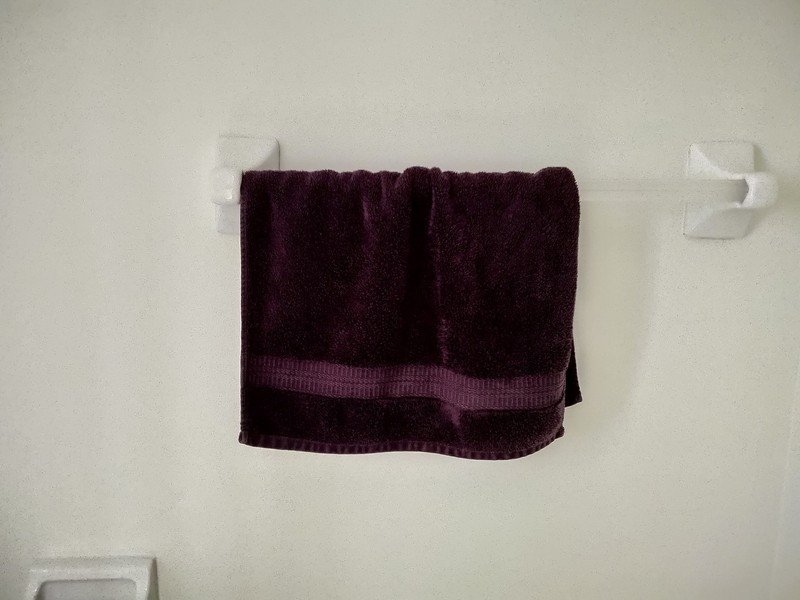
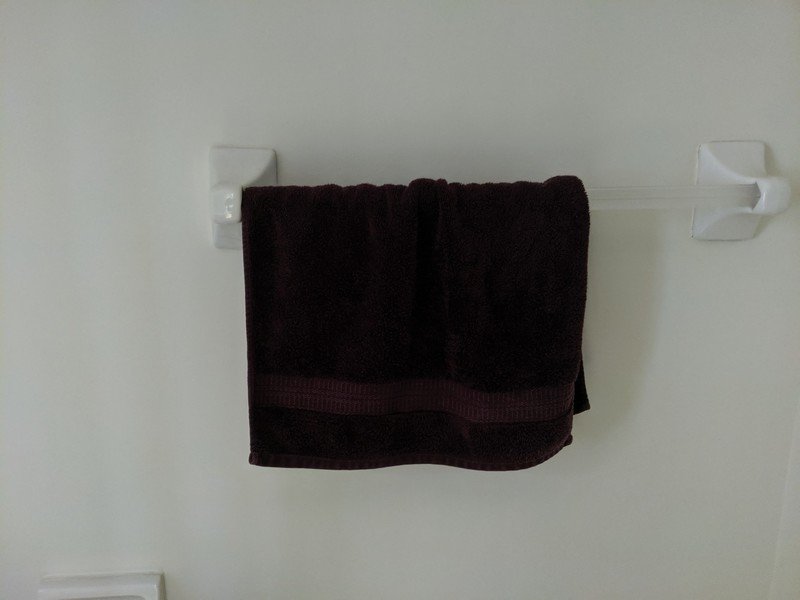
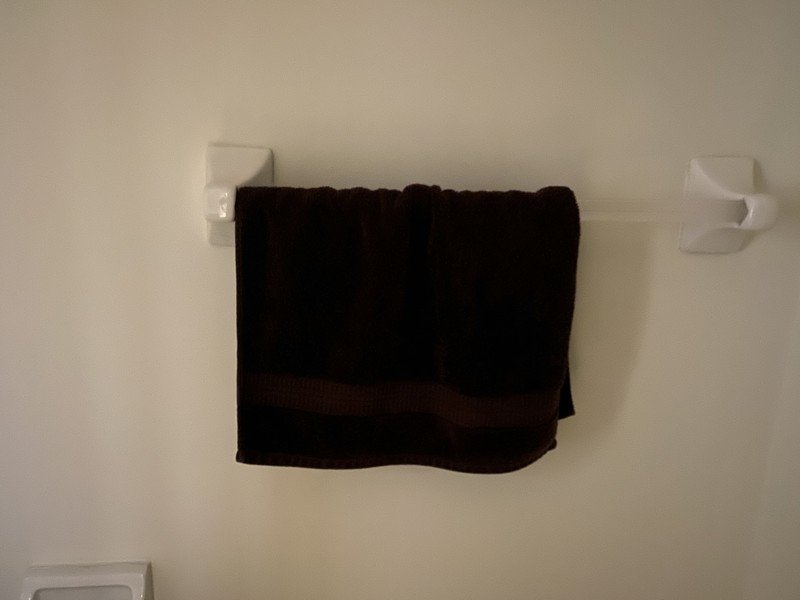
Source: Android CentralMotorola One Zoom Night Vision (left) | Pixel 3 Night Sight (center) | iPhone 11 Pro Night Mode (right)
I'm equally impressed with the phone's night mode, which Motorola called Night Vision. I tested it against a Pixel 3 and iPhone 11 Pro in a drearily dark bathroom and honestly felt like the One Zoom did the best job at preserving detail. It's not as fast as the iPhone's, or as drmatic as the Pixel's — but it uses sheer physics to keep the shutter open as long as possible, and some post-production magic to cut down on noise despite an eye-widening 4000 ISO.
If it weren't for the many performance issues I had with the phone itself, and the camera app in particular, my recommendation of the Motorola One Zoom for its camera prowess would be unreserved. Not every photo is a keeper, and many need quite a bit of work post-production, but the fundamentals and flexibility are tantalizing, especially for the price. In other words, you're not quite getting Pixel 3a-level quality, but you're getting most of the way to a OnePlus 7T for $150 less.
Odds and ends
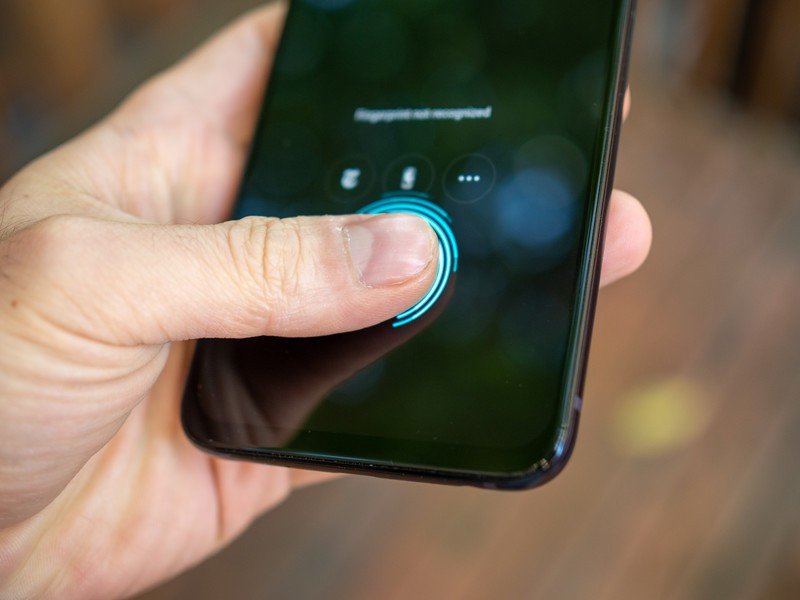
There's no waterproofing here, but Motorola always coats its phones' insides with a water-repellent nano-coating, which means that while you shouldn't immerse the darn thing in a full sink, or drop it in the toilet, you don't have to worry when caught in a thundershower.
There is a headphone jack onboard here, which is a nice break from all of the phones of this size that are getting rid of the port. And right next to it, the USB-C port can charge at a speedy, but not breathtaking 15 watts. A typical 18W TurboPower charger is included in the box.
Should you buy the Motorola One Zoom? Yes, but wait for a sale
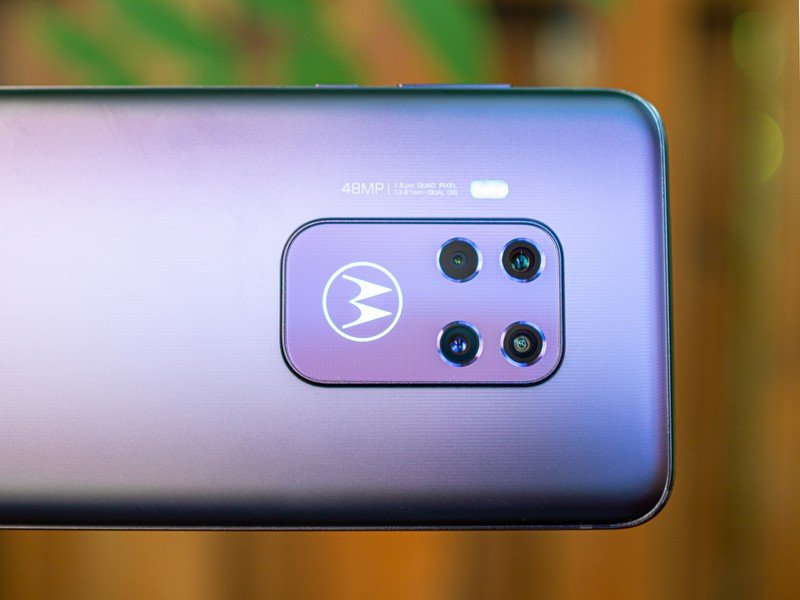
I ended up liking the Motorola One Zoom more than I thought I would. The camera is reliable, if a bit finicky, and the software experience, while mature, and enjoyable, is largely the same as it was in 2013.
Battery life is superb, as is the phone's look and feel (if you can get over the slight bezel and chin on the front), and I love the light-up Motorola logo on the back for notifications.
On the other hand, performance isn't consistently good — slowdowns are common, especially in the all-important camera app itself. And because this is an international variant being sold in the U.S., it lacks the CDMA modem bands to work on Verizon or Sprint, so you're left with just AT&T and T-Mobile (and their numerous MVNOs).
3.5 out of 5
My main reason for concern is identical to any Motorola phone, at any price point: software updates. Motorola went from being among the most reliable updaters to the least, and while the company claims that the One Zoom will receive an update to Android 10, I wouldn't hold my breath for a speedy rollout. Given that my review unit, which I received in late September, still has the July 1, 2019 security patch applied to it, I'm not optimistic about regular security patches, either.
But if you can get over that mental hurdle, this is a really good phone, and a great deal. Amazon has it for $399 right now, which is the same price as the Pixel 3a.
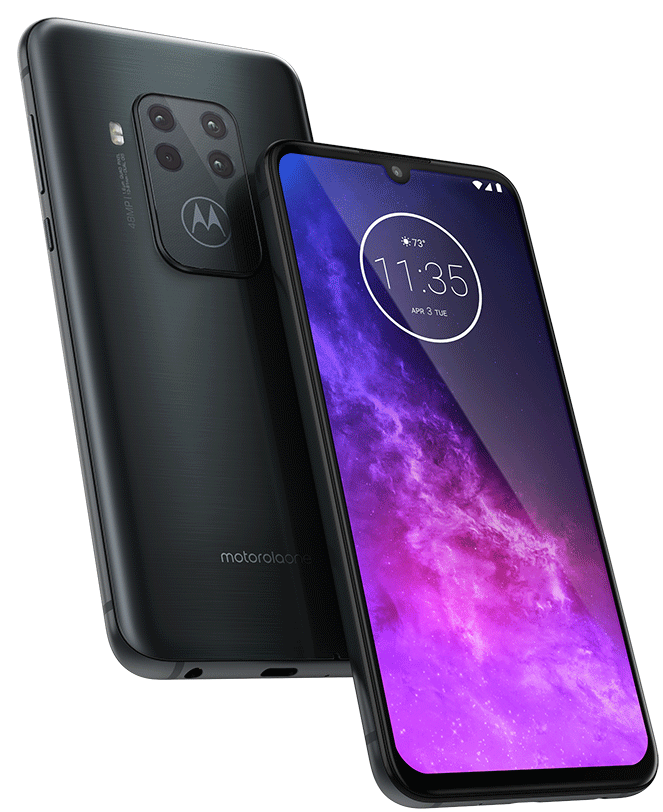
Lots to like
The Motorola One Zoom is a nice surprise from Motorola, with excellent hardware and a lovely, warm design. Plus, Motorola's software is still great. But its main draw, the quad-camera setup, despite producing great photos, is let down by poor performance from a mid-range chip with so-so image processing.
Daniel Bader was a former Android Central Editor-in-Chief and Executive Editor for iMore and Windows Central.
